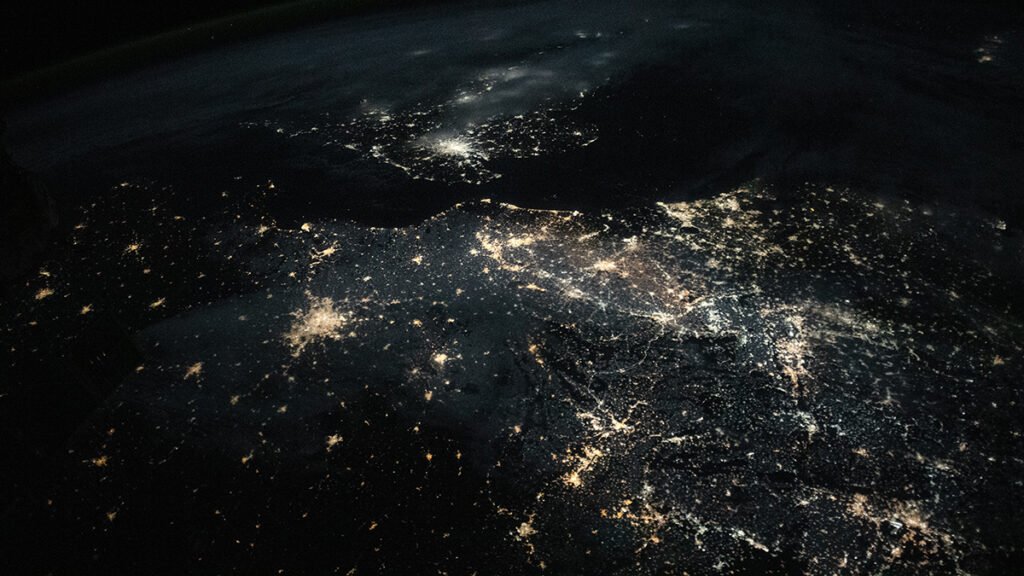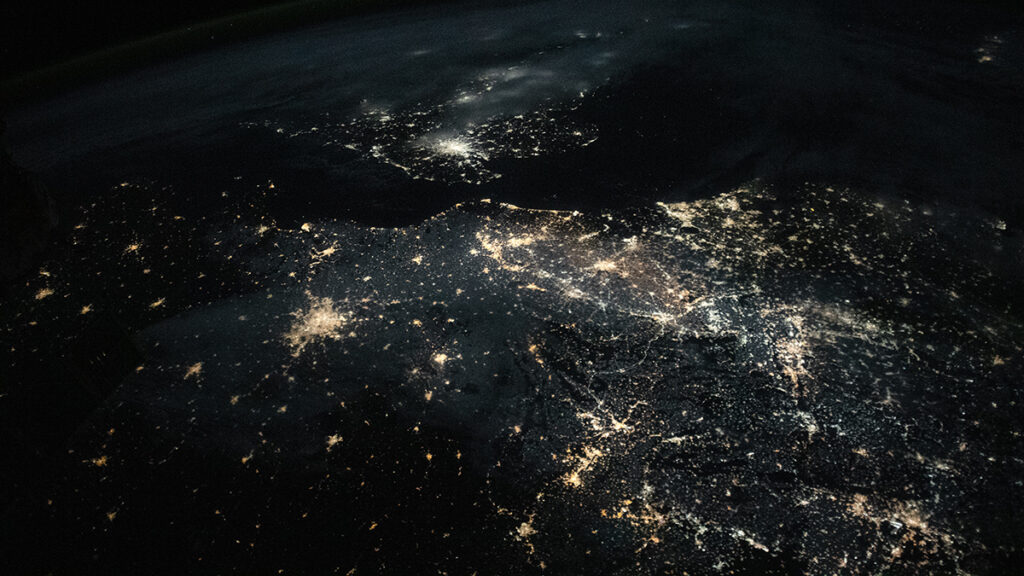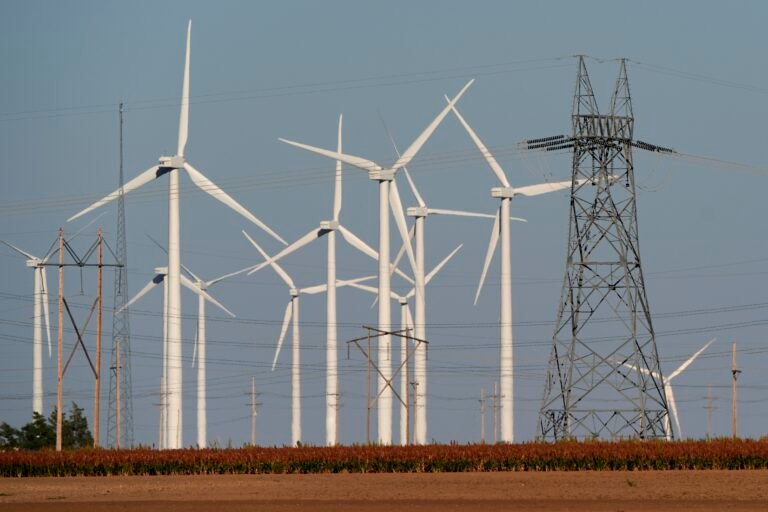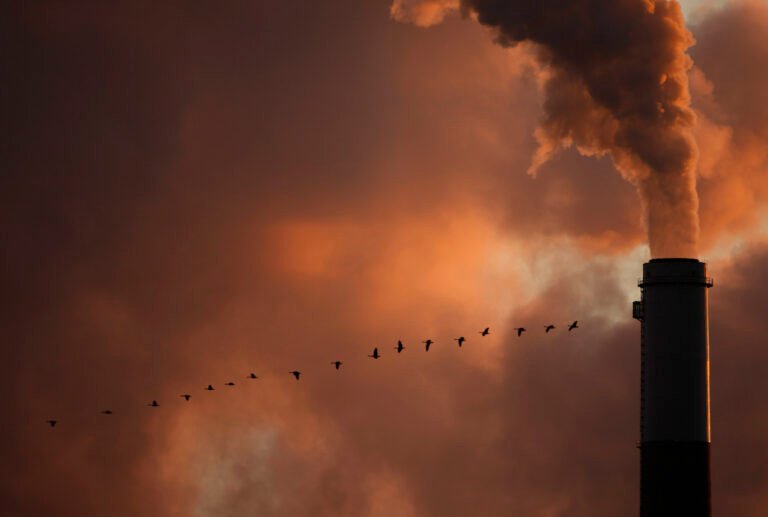

Artificial light and higher temperatures in cities may lengthen the growing season by up to 24 days, according to a new study in Nature Cities.
Previous studies have observed that plant growth starts earlier and ends later in cities than in rural areas. But these studies haven’t concluded whether this difference depends more on heat or light, both of which regulate the growing season and are amplified in urban centers.
The new study’s authors used satellite data to estimate nighttime light pollution in cities and pinpoint the start and end of the growing season. They found that the amount of artificial light at night plays a bigger role in growing season length than temperature does, especially by delaying the end of the season.
“This study highlights artificial light at night as a powerful and independent force on plant phenology,” said Shuqing Zhao, an urban ecologist at Hainan University in China who was not involved in the research. “It marks a major step forward in our understanding of how nonclimatic urban factors influence plant life cycles.”
City Lights Trick Plants
“Plants rely on both temperature and light as environmental cues to regulate their growth,” explained Lin Meng, an environmental scientist at Vanderbilt University and a coauthor of the study. In the spring, warmer temperatures and lengthening days signal to plants that it’s time to bud and produce new leaves. In the fall, colder, shorter days prompt plants to drop their leaves and prepare for winter.
“Plants evolved with predictable cycles of light and darkness—now, cities are flipping that on its head.”
But in cities, these essential cues can be disrupted. Cities are typically hotter than surrounding rural areas—the so-called urban heat island effect—and much brighter because of the abundance of artificial light. These disrupted cues “can trick plants into thinking the growing season is longer than it actually is,” Meng said. “Plants evolved with predictable cycles of light and darkness—now, cities are flipping that on its head.”
To assess how heat and light are affecting urban plants, Meng and her coauthors used satellite data from 428 cities in the Northern Hemisphere, collected from 2014 to 2020. For each city, the researchers analyzed correlations between the amount of artificial light at night (ALAN), air temperature, and the length of the growing season.
The scientists found that on average, the growing season started 12.6 days earlier and ended 11.2 days later in city centers compared with rural areas. ALAN apparently played an important role in extending the growing season, especially in the autumn, when ALAN’s influence exceeded that of temperature.
Anna Kołton, a plant scientist at the University of Agriculture in Krakow who was not part of the research, highlighted the significance of this result. “The impact of climate change, including increased temperatures on plant functioning, is widely discussed, but light pollution is hardly considered by anyone as a significant factor affecting plant life.” The new study is among the first to bring ALAN’s effects into the spotlight.
“Every Day Needs a Night”
“The extension of urban vegetation may at first glance appear positive,” said Kołton. But this positive impression is deceiving. In reality, an extended growing season “poses a threat to the functioning of urban greenery.”
Delaying the end of the growing season may be especially disruptive. In the fall, shortening days prompt plants to reduce their metabolic activity, drop their leaves, and toughen up their cell walls to withstand the coming winter. But if they are constantly stimulated by artificial light, Kołton pointed out, urban plants may miss their cue and be unprepared when the cold hits.
“Every day needs a night, and so do our trees, pollinators, and the rhythms of nature we all depend on.”
Longer growing seasons also affect animals and people. “Flowers might bloom before their pollinators are active, or leaf-out might not align with bird migration,” said Meng. “And for people, a longer growing season means earlier and prolonged pollen exposure, which can make allergy seasons worse.”
As cities become bigger and brighter, their growing seasons will likely continue to lengthen unless the impacts of ALAN are addressed. “The good news is that unlike temperature, artificial light is something we can manage relatively easily,” said Meng. She and Zhao both suggested that swapping blue-rich LED lamps for warmer LEDs (which are less stimulating to plants), introducing motion-activated or shielded lights, and reducing lighting in green spaces could limit light pollution in cities.
“Every day needs a night,” Meng said, “and so do our trees, pollinators, and the rhythms of nature we all depend on.”
—Caroline Hasler (@carbonbasedcary), Science Writer
Citation: Hasler, C. (2025), Artificial light lengthens the urban growing season, Eos, 106, https://doi.org/10.1029/2025EO250254. Published on 18 July 2025.
Text © 2025. The authors. CC BY-NC-ND 3.0
Except where otherwise noted, images are subject to copyright. Any reuse without express permission from the copyright owner is prohibited.


